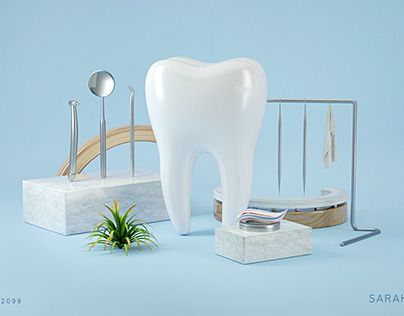The first step in selecting the best oral products is to seek those that have the ADA Seal of Acceptance. If so, you can ensure that statements stated on packaging and labeling are accurate. Below are some fundamental dental care tools to rely on.
These can make a significant difference in achieving a brighter and fresher breath.
Use fluoride-containing toothpaste.
Most toothpastes have chemicals that help with dental anxiety, gastritis, bad breath, and tartar. Additives in toothpaste, such as brightening chemicals, can erode tooth enamel. So, it is advisable to inquire with your dentist about the finest toothpaste for your unique oral healthcare needs.
Always choose a soft-bristled toothbrush.
Because hard-bristled toothbrushes are too abrasive on your gums, they should be avoided. You might also want to try using an electric toothbrush. It makes brushing easier, especially for those with arthritis or another hand-related health issue.
Your toothbrush should also be the right size and shape for you. So, you can make your brushing routine easier and more pleasant by doing so.
Use interdental cleaning devices.
Picks, sticks, and mini-brushes are among the items available to clean between or around teeth. Make sure the substance you choose can go between your teeth and beneath your gum line softly.
Floss to help reduce plaque buildup.
It can get rid of food particles that your toothbrush didn’t get rid of. Waxed and unwaxed dental floss are available. If your teeth are closely spaced, waxed floss or flossing tape may make it easier to floss between them.
Floss comes in a variety of flavors to make flossing less of a chore. Stick with your favorite brand because you’ll be more likely to use it.
Use high-quality dental products.
It is the best way to whiten your teeth. Peroxide solutions are used in dental whiteners to really bleach your teeth. You might also use an over-the-counter whitening treatment like whitening strips.
But, sad to note, it won’t provide the same effects as office treatment.
Use an irrigator spray.
This is useful for young people who have problems cleaning their braces. It is also good for adults who have permanent partial dentures. It’s important to remember that an oral irrigator is a supplement to regular brushing and flossing.
Seek for one that you really can control the hydraulic fluid with, so it will be easy for you to handle.
Tongue scrapers can also be used.
It is a useful tool for reducing bad breath. It can help to decrease the number of germs in your mouth that produce bad breath.
Using mouthwash is also essential.
These are designed to address a variety of dental issues. Some aid in plaque reduction and gingivitis prevention. Others contain fluoride to aid in cavity prevention. Some people can disguise or regulate their foul breath. If brushing and flossing are difficult for you, a mouthwash might help prevent tooth decay and gum disease.
Consult your dentist to find out which mouthwash is good for you.
Methods for Keeping a Healthy and Fresher Mouth
In maintaining proper dental hygiene, taking preventative measures is the way to go. This is essential at any age, especially as you become older. The great news is that if you start doing the preventative practices below, you can prevent future negative repercussions.
Let’s start with this easy oral hygiene advice for adults.
- Carry out the brushing routine.
Clean your teeth at least twice a day, brushing both the front and back surfaces of your teeth and gums. Two minutes for each task to be completed thoroughly. Brush your tongue lightly to eliminate odor-causing germs, which can help you breathe better.
And always remember to replace your toothbrush every three months.
- Think about the flapping technique.
Flossing is one approach to maintaining dental hygiene. It helps eliminate germs from areas between teeth that are difficult to reach with brushing alone. To do so, begin with an 18-inch length of floss and wrap the majority of it around one hand’s middle finger.
Tie a tiny quantity around the other hand’s middle finger. Move the floss up and down between each tooth, forming a C-shape as you approach the gum line. As you move along the other tooth, unwrap clean floss with one hand and old floss with the other.
- Make Use of a Mouthwash.
Mouthwash can reach areas that your toothbrush and even flossing can’t reach. Look for a fluoride-containing mouthwash. It has been shown to strengthen enamel and prevent cavities.
If you have braces, a dental rinse is typically prescribed for extraoral cleanliness.
- Consume healthy foods.
A nutritious, well-balanced diet is crucial for your general health as well as your oral hygiene. Make sure your diet contains enough dairy products, fruits, veggies, and whole grains. Cheese, yogurt, dairy, and nuts are among the foods that are particularly helpful for dental hygiene.
These meals can aid in the removal of sugar from the surface of the teeth as well as the prevention of plaque.
- Choose the very best dental care products.
The wide range of oral hygiene solutions can help maintain a consistent oral hygiene practice. You’ll be much more likely to stick to your dental hygiene practice if you use toothbrushes and dental floss that are convenient to use.
- Visit your dentist as often as possible.
Visiting your dentist regularly is an important component of your oral hygiene practice. Remember, seeing your dentist on a regular basis is one of the most crucial weapons for a healthy smile. Do it at least twice a year to help avoid tooth stains and detect oral hygiene concerns before they become severe.
Several cavities and tooth diseases have no indications. So, unless you see a dentist on a routine basis, a serious oral health condition might go unnoticed. So, when you’re in the dentist’s chair, ask all your dental concerns.
Your dentist can answer all your queries and knows how to take good care of your teeth in order to achieve the best oral hygiene you can ever imagine.


